Long-Term Results of Mandibular Reconstruction with Autogenous Bone Grafts and Oral Implants-Juniper publishers
JUNIPER PUBLISHERS-OPEN ACCESS JOURNAL OF HEAD NECK & SPINE SURGERY
Abstract
The reconstruction of mandibular defects after tumor
resection is a challenging problems faced by Head and neck oncosurgeons.
The mandible bone is known to play an important role in upper and lower
airway protection and supporting of the musculature of tongue and
dentition, as well as the muscles of floor of mouth, thus permitting the
various physiologic acts of mastication, articulation, deglutition, and
respiration. It is also known to provide for the contour of the lower
face. Any interruption of mandible therefore produces both cosmetic and
functional deformity. Resection of the mandible results in its deviation
toward the resected side due to the unopposed pull of remaining muscles
of mastication and scar formation. There is also limitations in
movements of the jaw. We present a case of squamous cell carcinoma of
left RMT & gingivo-buccal sulcus with mandibular bone invasion. He
underwent hemimandibulectomy and ipsilateral radical neck dissection
with post-operative radiotherapy in 2003. After 13 years of follow up he
presented to us with complete resorption of the iliac crest graft with
intact implant and no other symptomatic complaints. In review of
literature regarding comparison of vascularized fibular flap and iliac
crest flap for mandibular reconstruction it was found that functional
and aesthetic results also showed that oral continence, social
activities, and facial appearance rates of fibula flap are superior to
iliac crest flap. The main complications of using iliac crest grafts are
anaesthesia of the skin supplied by the lateral cutaneous nerve of the
thigh, incisional hernias, and wound dehiscence in the thigh.
Keywords: Bone resorption; Iliac bone graft; Hemimandibulectomy
Case Report
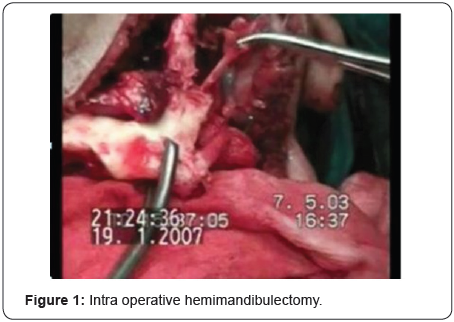
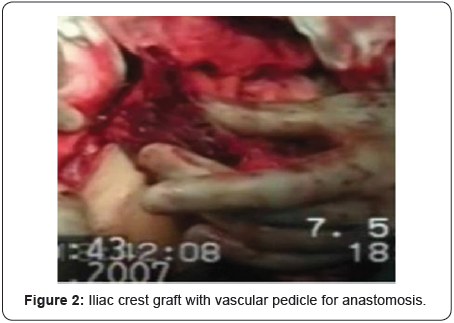
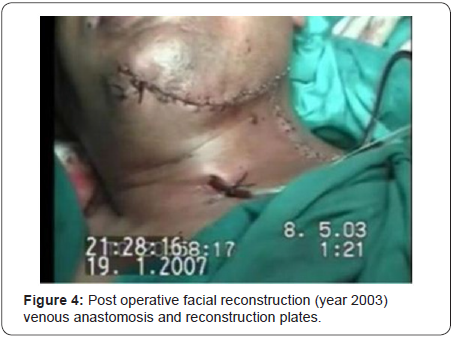

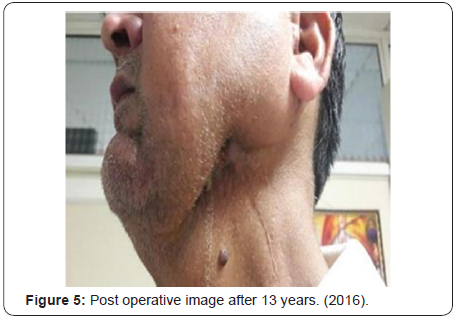
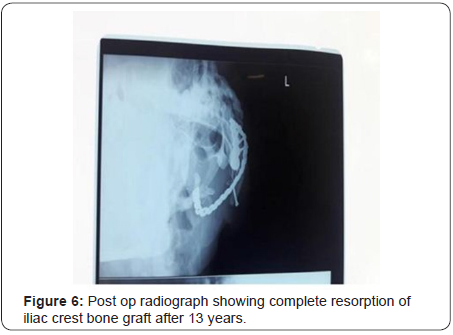
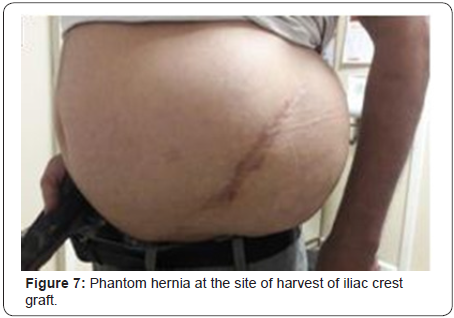
We present a case of squamous cell carcinoma (SCC) of the
oral cavity with mandibular infiltration in a 35 years old male
patient requiring hemimandibulectomy, treated by surgical
resection, therapeutic neck dissection and radiotherapy. Grafts
from the iliac crest were used for augmentation of the defect,
however it was associated with complete bone resorption after
13 years of surgery as a possible late complication (Figure 1-7).








Comments
Post a Comment